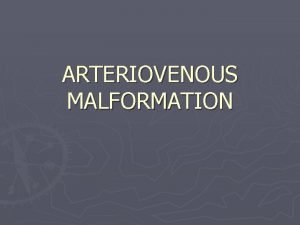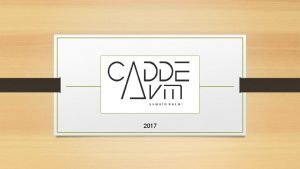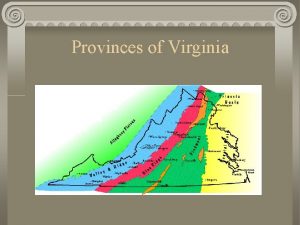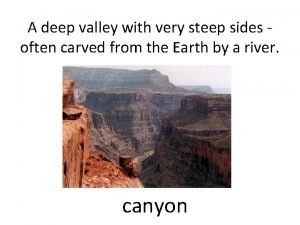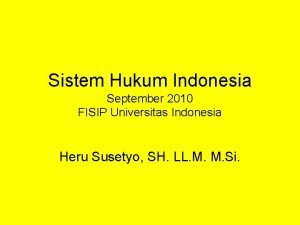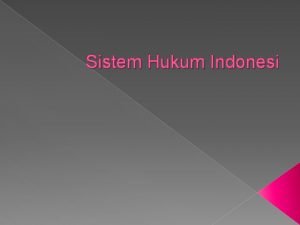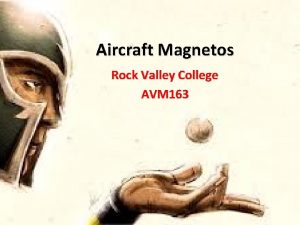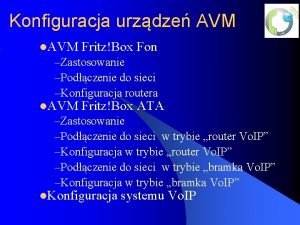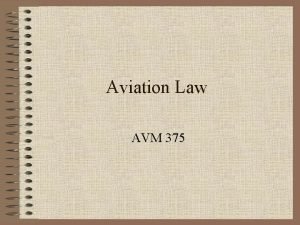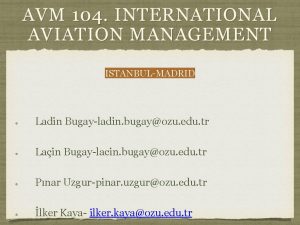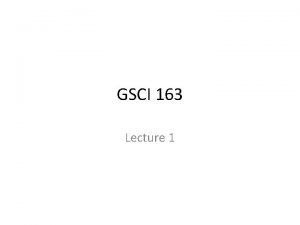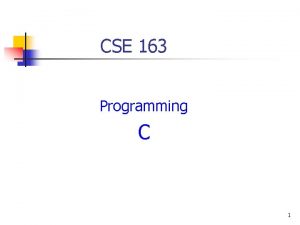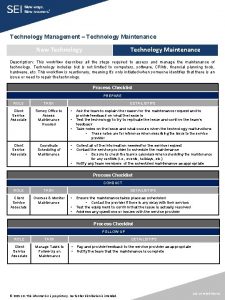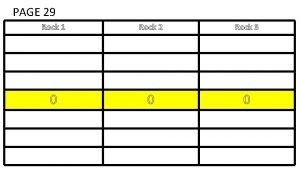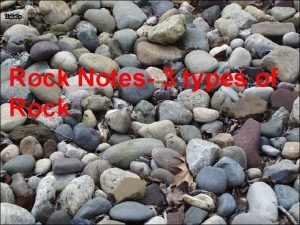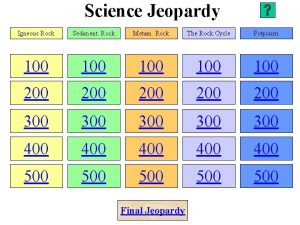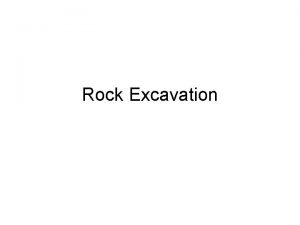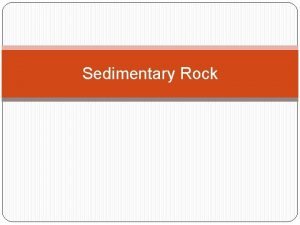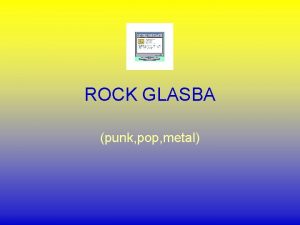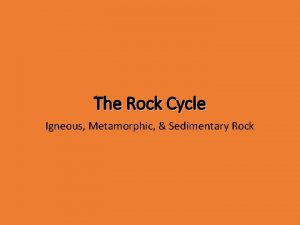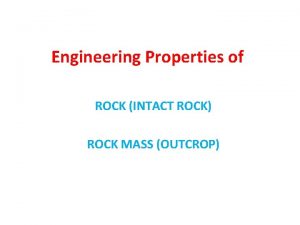ROCK VALLEY COLLEGE AVIATION MAINTENANCE TECHNOLOGY AVM 163































- Slides: 31

ROCK VALLEY COLLEGE AVIATION MAINTENANCE TECHNOLOGY AVM 163 LESSON #1 MAGNETISM

THE EART H

Magnetic Declination Magnetic declination is the angle between compass north (the direction the north end of a compass needle points) and true north (the direction along the earth's surface towards the geographic North Pole). The declination is positive when the magnetic north is east of true north. The term magnetic variation is a synonym, and is more often used in navigation.

INCLINOMETER

TYPES OF MAGNETS LOADSTONE HORSESHOE ELECTROMAGNET BAR

NATURAL MAGNET LOADSTONE Material is Magnetite or Iron Oxide (Fe 2 03)

ELECTRO - MAGNETS A very strong magnet can be made with a coil of wire and the flow of an electric current.

ALNICO An extremely strong Alnico permanent magnet with keeper • Aluminum (AL) • Nickel (NI) • Cobalt (CO)

THEORY OF MAGNETISM Molecular and Electron Theories

Creating Magnets Methods used to create a magnet The picture shows that a screwdriver does not pick up until it is magnetized

However, after stroking the screwdriver with a magnet, the blade itself becomes magnetic and attracts the metal washer.

Flux Magnetic lines of force Strongest at the poles

REMOVING MAGNETISM Heat is one way to remove magnetism.

LAWS OF MAGNET S

LAWS OF MAGNETS SHOWN BY FLUX LINES Unlike poles attract Like poles repel


STRAY LINES OF FORCE Controlling stray lines using a keeper

Magnetic Lines of Force Magnetism will pass through any material Notice how the materials are affected Soft iron is a material that distorts flux

ELECTROMAGNET ISM

ELECTROMAGN AETS 30 -foot diameter electromagnet used in research for a superconductor A large electromagnet used to lift scrap metal

ELECTROMAGNETS The source of electromagnetism is electricity (current) flowing through a coil of wire.

ELECTROMAGNETS A coil of wire can be made into a magnet by passing an electric current through it. Without electricity, there is no magnetic force Electric current applied to a coil creates a magnetic field

ELECTROMAGNETIC STRENGTH How can an electromagnet be made stronger? • Increase the number of coils. • Increase the electric current flowing through the coil. • Add an iron core in the center of the coil.

ELECTROMAGNETIC STRENGTH

THE LEFT HAND RULE DETERMINE NORTH POLE

Making a Magnet The coil of wire has been attached to a 12 volt DC power source making an extremely strong magnet. The magnet is strong enough to lift this 50 pound engine cylinder head.

SATURATIO N field occurs when an increase of Saturation of a magnetic electric current flow does not increase the strength of the magnetic field as shown by the graph. The knee of the curve is the point that saturation occurs. Y- Axis Increasing Magnetic Force X- Axis Increasing Electric Current Y Saturation Knee X

MAGNETIC COIL LOSSES Copper losses - resistance of copper coils. Hysteresis - magnetic flux inducing a current in the core. Eddy currents - magnetic polarity of the iron core is rapidly changed by an AC current causing friction and heat between the molecules

ELECTROMAGNETIC DEVICES

MAGNETIC TERMS Flux - Invisible lines of force. Poles - North and South where force is strongest. Permeability – The ability of a material to conduct lines of force. Residual Magnetism – The ability of a material to hold its magnetism for a long time.

MAGNETIC TERMS Ferromagnetic Material – A material easy to magnetize. (i. e. , Iron Steel, Cobalt, Perm-alloy, and Alnico) Paramagnetic Material- A material that can be slightly magnetized. Diamagnetic Material – A material that is very difficult to magnetize. Magnetic Laws – Simply stated: Like poles repel and unlike poles attract.
 Igneous metamorphic sedimentary
Igneous metamorphic sedimentary Avm vs aneurysm
Avm vs aneurysm Cadde avm sinema
Cadde avm sinema Avm backtesting
Avm backtesting Avm 360
Avm 360 Flightlevel aviation aircraft maintenance
Flightlevel aviation aircraft maintenance Aviation tool control
Aviation tool control Aviation maintenance quality management
Aviation maintenance quality management Netherlands caa
Netherlands caa Landforms of virginia
Landforms of virginia A deep valley with steep slides
A deep valley with steep slides Rock cycle sedimentary
Rock cycle sedimentary Igneous rock to metamorphic rock
Igneous rock to metamorphic rock Adventure sports bungee jumping
Adventure sports bungee jumping A rock climber's shoe loosens a rock and her climbing buddy
A rock climber's shoe loosens a rock and her climbing buddy Chapter 3 standardized test practice answers
Chapter 3 standardized test practice answers Diagram of rock cycle for class 7
Diagram of rock cycle for class 7 Technology and maintenance council
Technology and maintenance council East river valley phoenicians and israelites technology
East river valley phoenicians and israelites technology Arcadia valley career technology center
Arcadia valley career technology center Moraine valley cna program
Moraine valley cna program Evergreen valley college summer classes
Evergreen valley college summer classes Hotels near paradise valley community college
Hotels near paradise valley community college River valley community college
River valley community college Dvc financial aid
Dvc financial aid Kennebec valley technical college
Kennebec valley technical college Ivc transfer center
Ivc transfer center River valley community college nursing
River valley community college nursing Joe mcdevitt west valley college
Joe mcdevitt west valley college Pasal 163 is
Pasal 163 is Pasal 163 is
Pasal 163 is Pasal 163 is
Pasal 163 is

